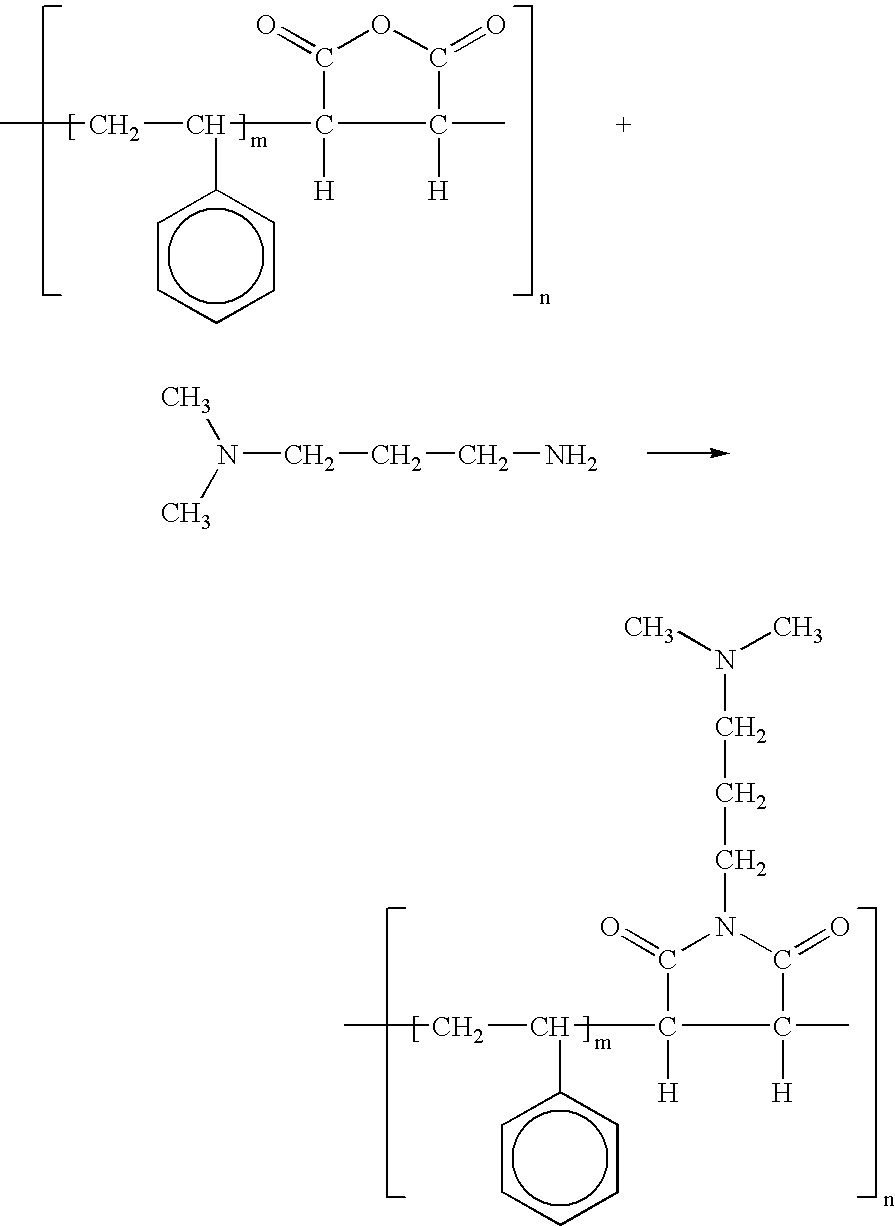Method for coloring cellulosic materials using cationic pigment dispersion
a cellulosic material and pigment dispersion technology, applied in the field of cellulosic material coloring, can solve the problems of lack of market penetration and neutralizing agen
- Summary
- Abstract
- Description
- Claims
- Application Information
AI Technical Summary
Benefits of technology
Problems solved by technology
Method used
Image
Examples
example 1
Formulation of a Cationic Dispersion Containing Blue Pigment
A high speed mixer was used to mix acetic acid, phthalocyanine blue pigment, styrene maleimide imide resin (SMA x 2000 I, commercially available from ATOFINA Chemicals, Inc., Philadelphia, Pa.), a defoaming agent comprising a mixture of dipropylene glycol and tetramethyl-6-dodecyne-5,8-diol, commercially available from Air Products, Inc. under the trademark DF110D, a biocide comprising octhilinone, commercially available from Thomson Research Associates, Toronto, Canada, under the trademark ULTAFRESH DM-25, and water to form a dispersion premix, which was then media milled (Eiger mixer) to disperse and incorporate the pigment into the dispersion had a total solids percentage of percentage of 48.7. The weight percentage composition of this cationic dispersion is set forth below in Table 1:
TABLE 1MATERIALSWEIGHT PERCENTAGESStyrene Maleimide Imide5.50Pigment (Phthalo Blue)43.00Weak Acid (Acetic Acid)1.00Defoamer0.10Biocid...
example 2
Formulation of a Cationic Dispersion Containing Yellow Pigment
A second cationic dispersion was formulated using the general procedures of Example 1. The weight percentage composition of the resulting cationic dispersion is set forth below in Table 2:
TABLE 2MATERIALSWEIGHT PERCENTAGESStyrene Maleimide Imide5.50Pigment (Phthalo Blue)43.00Weak Acid (Acetic Acid)1.00Defoamer0.10Biocide0.10Water50.30TOTAL100%
example 3
Coloring of Paper Pulp
The cationic dispersions of Examples 1 and 2 were each individually used to color paper pulp in accordance with the following procedure: 4 grams of a 50 / 50 blend of hard and soft wood fibers were added to a beaker containing 100 grams of water and mixed for approximately 5 minutes using a flat mixing blade operating at a speed of at least 100 rpm to produce an aqueous suspension of cellulosic fibers.
Separately, 1 gram of the cationic dispersion was diluted with 250 grams of water. 25 milliliters of the diluted dispersion were pipetted into the aqueous suspension, which was mixed for another 5 minutes using the same mixing conditions and equipment, thus resulting in an aqueous suspension of colored cellulosic fibers.
The aqueous suspension was then put in a small sheet mold having a forming screen on the bottom, and the water was extracted, thereby forming a sheet of colored paper on the forming screen. Both of the cationic dispersions completely exhausted ...
PUM
| Property | Measurement | Unit |
|---|---|---|
| Dispersion potential | aaaaa | aaaaa |
| Viscosity | aaaaa | aaaaa |
Abstract
Description
Claims
Application Information
 Login to View More
Login to View More - R&D
- Intellectual Property
- Life Sciences
- Materials
- Tech Scout
- Unparalleled Data Quality
- Higher Quality Content
- 60% Fewer Hallucinations
Browse by: Latest US Patents, China's latest patents, Technical Efficacy Thesaurus, Application Domain, Technology Topic, Popular Technical Reports.
© 2025 PatSnap. All rights reserved.Legal|Privacy policy|Modern Slavery Act Transparency Statement|Sitemap|About US| Contact US: help@patsnap.com

